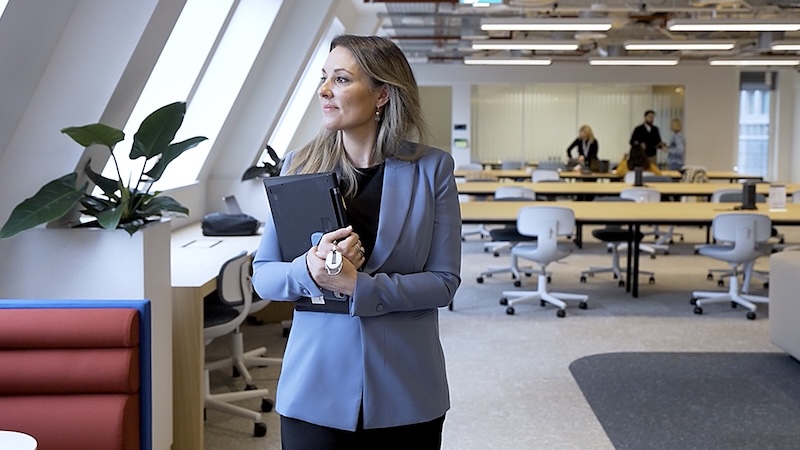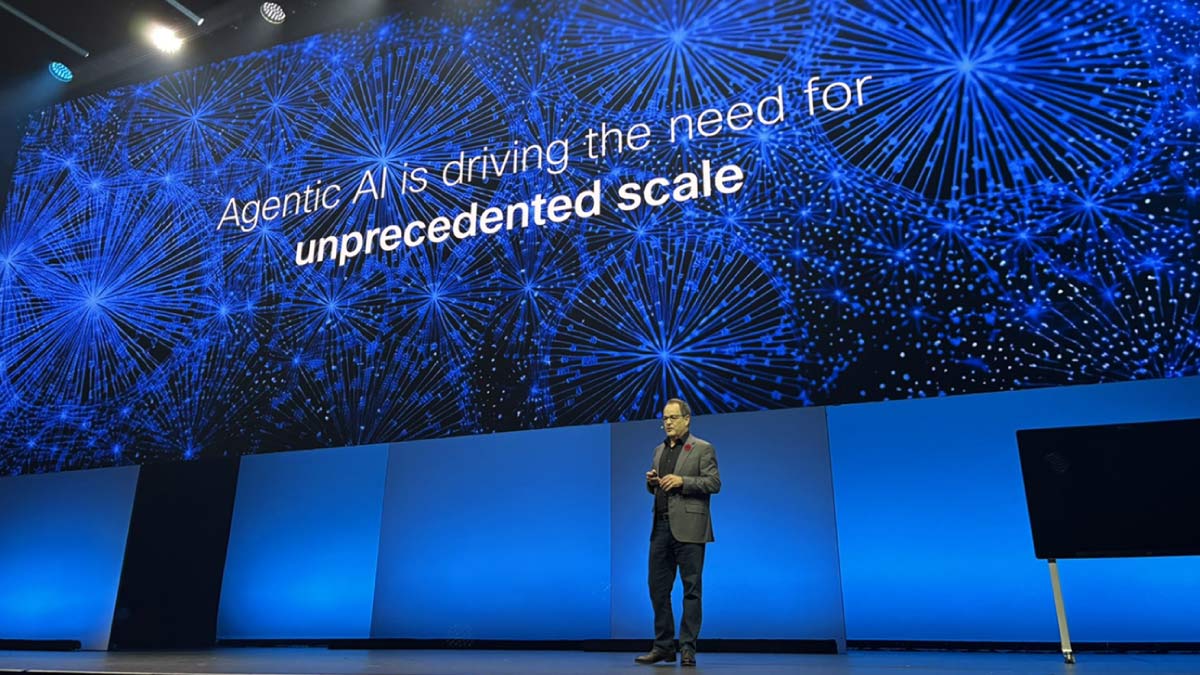“Before March of 2020, nearly 100% of my interaction with patients was face to face in the clinic. I don’t think I ever thought of or envisioned any other way of practicing medicine.”
Dr. Neil Merritt is a pediatric surgeon at Children’s Hospital at London Health Sciences Centre (LHSC) in London, Ontario. By nature, surgeons are in a high-touch specialty, but seemingly overnight, COVID-19 changed the way physicians treated their patients.
“All of a sudden there was now a real cost to physical contact that had never existed before,” Dr. Merritt explained. “If we brought families or patients to the clinic to see us, they could actually catch the virus. There was a great deal of fear amongst both physicians and patients.”
The Centre for Addiction and Mental Health (CAMH), Canada’s largest mental health teaching hospital, echoed those sentiments.
“Our patients’ wellbeing is always our top priority, and especially during a pandemic, we wanted to help them stay well and safe,” Dr. Allison Crawford, psychiatrist and director of Virtual Care at CAMH explained. “We needed a way to support those in distress, meet them where they are at, while also meeting public health mandates and continuing essential services.”
Finding a solution that worked
For Dr. Crawford, the solution was telehealth.
“We had to find a way to continue to deliver patient care,” she said. “Virtual health visits met patient’s needs because we knew the one thing they wanted: continued access to high quality care.”
While this would be fundamental to maintaining a standard of care, the challenge for healthcare centers was how to make sure patients had access to high quality care, that was also inclusive of all.
LHSC and St. Joseph’s Health Care London (St. Joseph's) worked together to develop a virtual care team, made up of IT specialists, physicians and health care professionals, and other administrators to find those solutions. Dr. Merritt serves on the team as the physician lead.
“The start of the pandemic was a lot like the wild west of virtual care,” he laughed. “There were all sorts of solutions that allowed us to meet digitally with our patients. The question became, which one worked best for us? Which allowed us to reach the most patients?”
“We had to make a quick pivot,” said Sara Hendrikx, a project manager within Information Technology Services, a joint department of LHSC and St. Joseph’s. “We already had an existing Webex platform, and a close partnership with our Cisco team.”
LHSC and St. Joseph’s utilized Webex to immediately begin supporting video visits with patients, but what they found was that it was creating a strain on their administrative staff.
“It took three separate programs, over 40 clicks and about three-and-a -half minutes to connect to one virtual visit,” Hendrikx explained. “Once we integrated everything through one solution, Webex Instant Connect, we were down to just 30 seconds.”
In a global pandemic, every second matters when it comes to patient care. Saving three minutes, means saving lives. That’s why it is also critical that telehealth solutions fit seamlessly into existing network infrastructures.
LHSC and St. Joseph’s use a Cerner MillenniumTM Electronic Health Record (EHR) that was already in place before the pandemic. This EHR includes various modules to support patients through their entire clinical journey. Various modules support patient appointment scheduling, registration on day of visit, electronic orders as well as clinical documentation solutions. Webex Instant Connect works seamlessly with scheduling, making it a kind of “one and done” application that automates the booking and launching of Webex video appointments.
“Physicians can view electronic patient medical records and launch to their virtual visit directly from the record,” Hendrikx said. “We’re saving a lot of time there. Physicians don’t have to sort through their emails or email calendars trying to find the right appointment for the right patient. They can go straight from the patient record.”
There is also the patient benefit.
“Traditionally, healthcare has been very provider centric,” Dr. Merritt said. “We need it to be patient centric and stop thinking about medicine from a physician’s point of view. What about the patient? Now, we are.”
Through LHSC’s and St. Joseph’s integrated platform, patient access is enhanced through automatic email reminders and simplified access to the video visit platform. This means that appointments are easier to attend, with just a click to access the virtual platform.
Overcoming challenges
One of the initial obstacles to telehealth was patients having to download whatever application their providers were using. For some patients this was an inconvenience and a deterrent to seeking treatment. As Hendrikx explained, with one integrated platform, that’s no longer the case.
“We found a real benefit with our integration, because patients didn’t have any new apps to download,” she says. “They can click a link in their email, and immediately be connected with their physician.”
Dr. Merritt says this is just a small example of a much larger problem: digital health literacy.
“There were patients for whom going virtual was a barrier because they didn’t have the technology,” he said. “It’s been a key point of our virtual care team, making sure we are not only providing high quality care, but that we don’t leave any patient out. If it takes an ordinary phone call, then that’s what we’ll do.”
Another key challenge was safety and security.
Patient data contains critical information that must stay within the four walls of the clinic. Cybercriminals making off with patient information could be catastrophic to both healthcare centers and patients.
For CAMH, security was a driving factor in their integration.
“It was key for us that patients have confidence that Webex was safe and secure. That it was a reliable choice,” said Mohamed Omar, CAMH’s IT Security Director.
Telehealth integration not only meant increased safety for patients, but physicians, too. Damian Jankowicz, VP Information Management, Chief Information Officer and Chief Privacy Officer at CAMH likened it to personal protective equipment (PPE).
“Physicians have told me that Webex is their PPE,” he said. “Just like gowns, masks, or face coverings, Webex is a tool that physicians are using to continue treating patients, while keeping everyone safe.”
Maintaining patient care
The result of these integrations was continued access for patients, and a standard of care that didn’t miss a beat.
“All of my follow-ups can be done virtually. I can discuss pathology with patients. I can make sure they are following post-operative directions,” Dr. Merritt explained.
Dr. Merritt also discovered additional benefits to virtual care.
“It gives me a look into my patients’ world that I may never otherwise see,” he said. “A patient can describe their symptoms to me, and then I may see a hockey trophy sitting on a wall behind them. Now I’m clued into them being an athlete in a rough sport, and a sports hernia is a possibility.”
LHSC and St. Joseph’s consider their virtual health integration to be a big success.
“Pre-COVID our hospitals saw about 800 to 1,000 virtual visits per week,” said Stephanie Johnston, Manager, Operations for Virtual Care at LHSC and St. Joseph’s. “Now we see up to 7,000 at LHSC and St. Joseph’s.”
CAHM’s adoption of telehealth saw similar results.
“Before the pandemic we saw about 1,800 people a year through our virtual mental health program,” Dr. Allison Crawford says. “Since focusing more heavily on telehealth, we’ve seen an astounding jump to about 10,000 patients per month.”
The future of telehealth
Telehealth has become an important part of every medical practice. Dr. Merritt claims that even though patients can be seen in person again, many are asking if they can stick to their virtual appointments. It is a practice he doesn’t see going anywhere, anytime soon.
“Virtual care will continue long after the pandemic is over,” Dr. Merritt predicts. “The horse is out of the barn, the genie out of the lamp, the cat of the bag. Virtual care is here to stay.”
Dr. Crawford agrees.
“Virtual care will never go back to being a rare or specialized service.”
###



